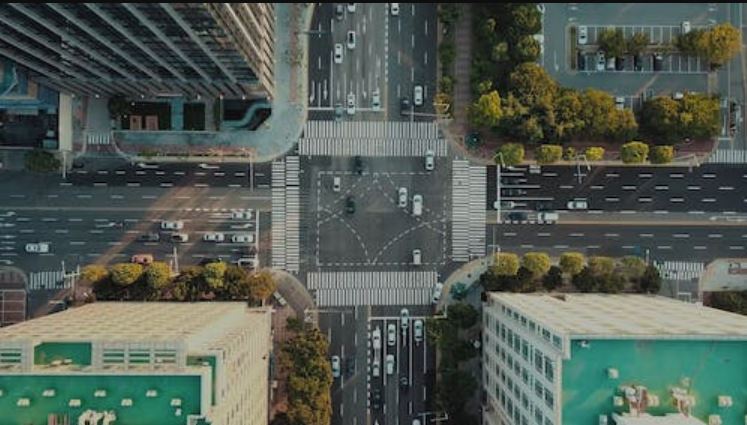In the world of documentary filmmaking, capturing breathtaking visuals is paramount. It not only adds depth and intrigue to your narrative but also immerses your audience into the story you’re trying to tell. While traditional cameras have their place, drones have revolutionized the way documentaries are filmed. As an experienced drone pilot at St. Louis Drones, I’m here to guide you through the essential drone shots that can elevate your documentary to new heights.
The Power of Aerial Perspectives
Drones have become indispensable tools for filmmakers, allowing them to capture stunning aerial shots that were once only possible with expensive helicopters or cranes. These aerial perspectives offer a unique vantage point that can showcase landscapes, cityscapes, and even the smallest details from a perspective that’s impossible to achieve with ground-based cameras.
1. Establishing Shots
Establishing shots are the backbone of any documentary. They set the scene, provide context, and give viewers a sense of the location or environment in which the story unfolds. Drones excel at capturing awe-inspiring establishing shots that can instantly grab your audience’s attention. Whether it’s a sweeping view of a natural landscape, a bustling cityscape, or an architectural marvel, a well-crafted drone establishing shot can set the tone for your entire documentary.
2. Tracking Shots
Tracking shots are dynamic and engaging, allowing you to follow subjects or objects seamlessly. Drones can effortlessly track moving subjects, whether it’s a person hiking through the wilderness, a car racing down a winding road, or wildlife in its natural habitat. The smooth and stable footage achieved with drones adds a professional touch to your documentary.
3. Reveal Shots
Reveal shots are all about building anticipation and unveiling something significant to your audience. Drones can create dramatic reveal shots by flying over or around obstacles, gradually exposing what lies beyond. This technique can be particularly effective when revealing hidden landscapes, historical sites, or key elements of your story.
4. Subject Isolation Shots
Drones can also be used to isolate your subject, drawing attention to it amidst a larger context. By employing techniques like depth of field and framing, you can emphasize your subject and convey its significance in the narrative.
5. 360-Degree Shots
To provide a comprehensive view of your surroundings, consider using 360-degree shots. Drones equipped with 360-degree cameras can capture everything around them, allowing your audience to immerse themselves fully in the environment you’re showcasing. This technique is ideal for capturing the beauty of natural landscapes, historic sites, and cultural events.
Technical Considerations for Drone Filmmaking
Achieving stunning drone shots is not just about creativity; it also requires technical proficiency. Here are some essential technical considerations for successful drone filmmaking:





1. Camera Quality
Invest in a high-quality drone with a capable camera. The resolution and image stabilization of the camera are crucial for producing professional-looking footage. At St. Louis Drones, we use state-of-the-art drones with top-notch cameras to ensure the best results for our clients.
2. Safety First
Safety should always be a top priority when flying drones. Familiarize yourself with local regulations and airspace restrictions. St. Louis Drones adheres to all safety guidelines and is fully licensed and insured for drone operations.
3. Flight Planning
Plan your drone flights carefully. Consider factors like weather conditions, wind speed, and flight path. Pre-flight planning helps ensure that you capture the shots you need without any mishaps.
4. Post-Production
Post-production is where the magic happens. Editing software allows you to refine your footage, add special effects, and create a polished final product. St. Louis Drones specializes in post-production services, ensuring that your documentary looks its best.
St. Louis Drones: Your Full-Service Infrared Drone Production Partner
At St. Louis Drones, we go beyond just capturing incredible drone shots for your documentary. We are a full-service drone production and post-production company with a track record of delivering compelling shots. Our team comprises experienced drone videographers and producers who understand the nuances of documentary filmmaking.
Our Services Include:
- Full-service studio and location video recording
- Expert video editing and post-production
- Photography services
- Customized video productions for diverse reporting needs
- Repurposing your productions to gain more traction
We are well-versed in all file types and styles of media software and reporting, ensuring that your documentary meets the highest standards of quality and precision.
Your Story Deserves the Best
As a full-service video creation company, St. Louis Drones has collaborated with numerous commercial businesses in the St. Louis area to create building infrared reports that are both informative and visually captivating. Our experienced team of drone videographers and producers can help you craft insightful marketing communications that leave a lasting impression on your audience.
When it comes to drone filmmaking, trust the experts at St. Louis Drones to take your documentary to the next level. Contact us today to discuss your project, and let’s bring your vision to life.
Your story is unique, and it deserves to be told with the best visuals possible. Elevate your documentary with St. Louis Drones.


